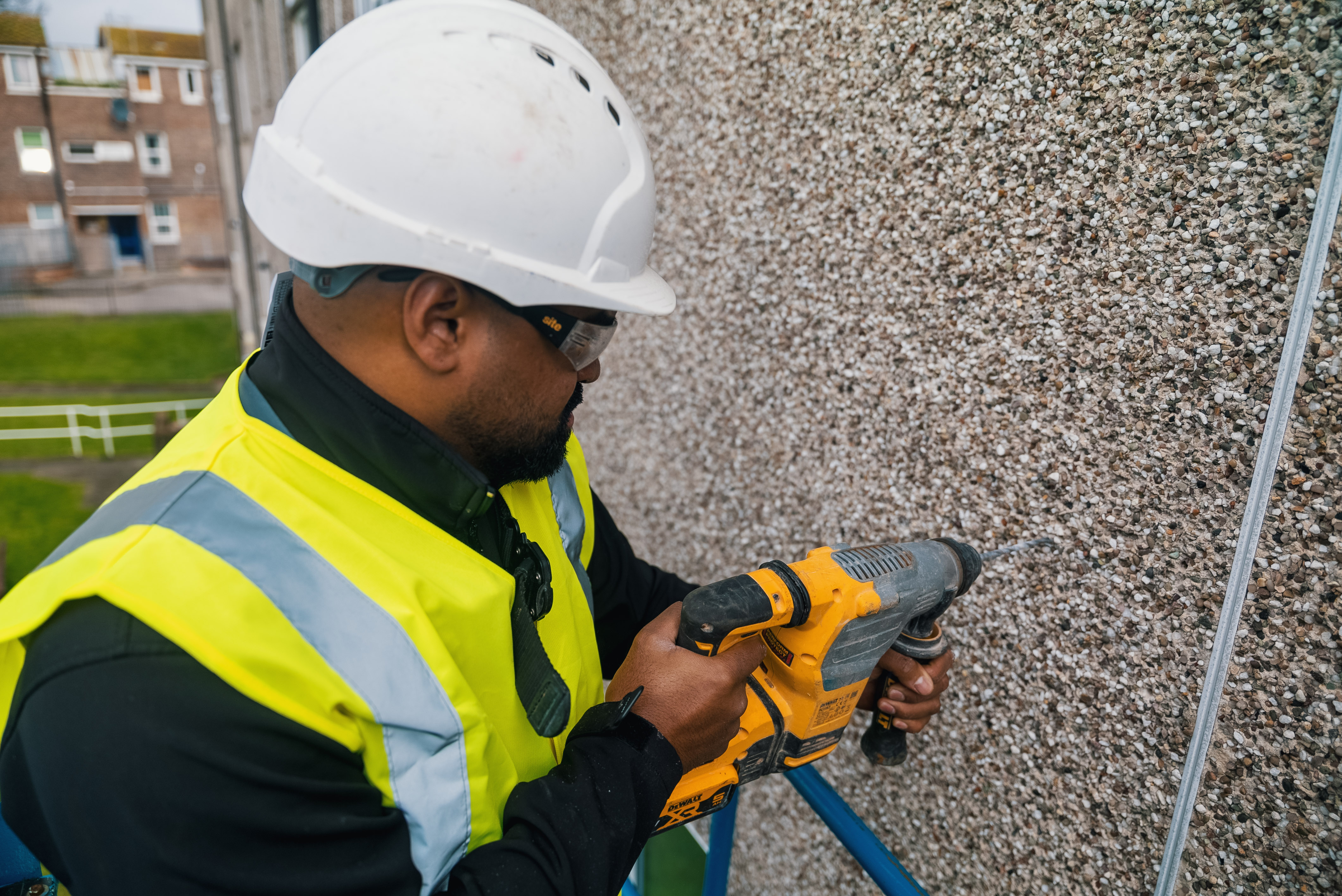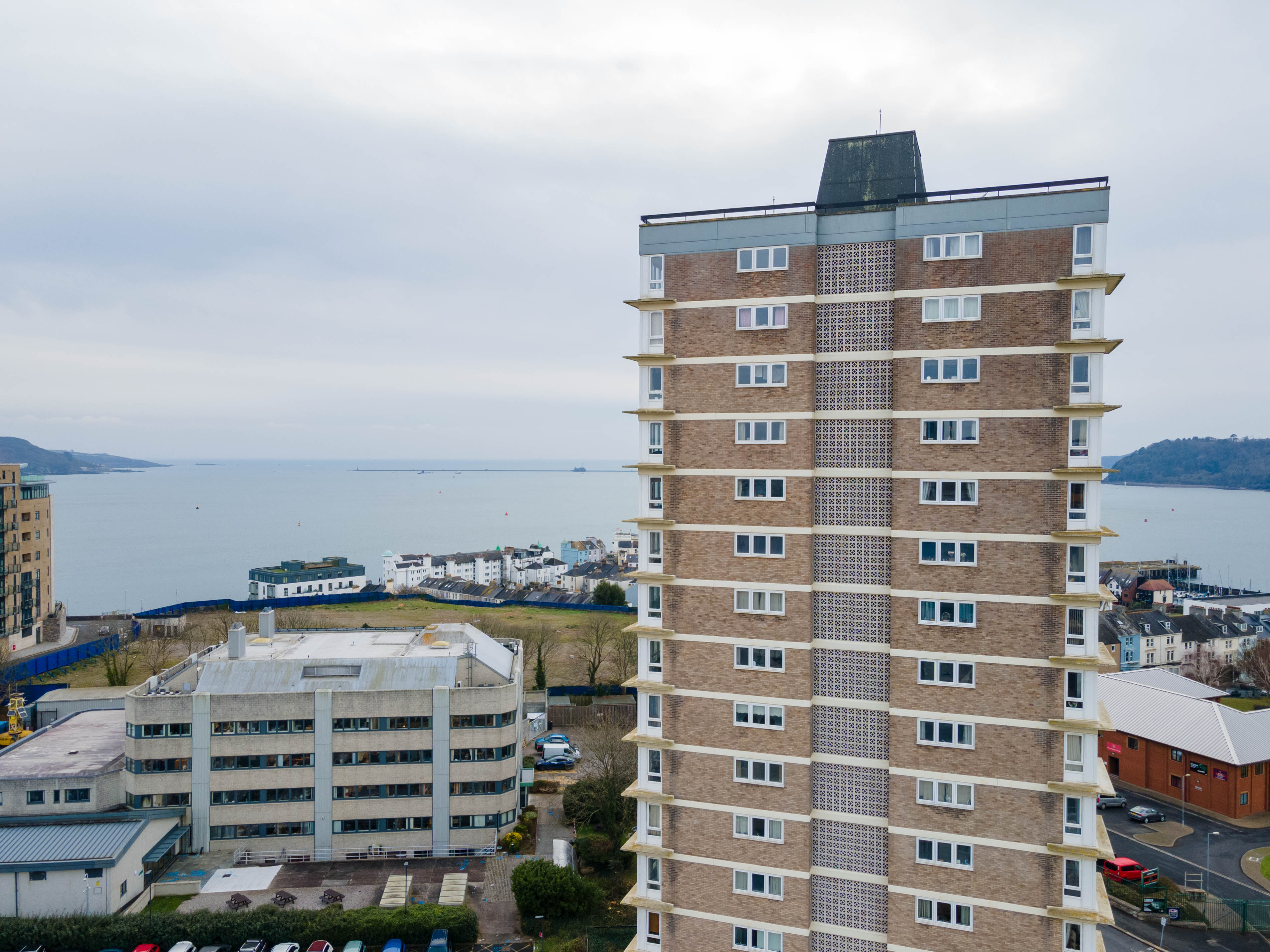
Retrospective Fire Strategy
Retrospective Fire Strategies provide vital insight into the fire safety design and performance of existing buildings, especially where original documentation is missing or outdated. At Firntec, we help housing providers, building owners, and duty holders understand how their properties align with current fire safety regulations, offering clear, evidence based strategies that support compliance, safety, and long-term management.

What is a Retrospective Fire Strategy?
A retrospective fire strategy is a detailed document created to assess and outline fire safety provisions for an existing building, typically one that was constructed without a formal fire strategy or where original documentation is missing or outdated. It ensures the building's design, layout, and fire safety measures meet current fire safety regulations and supports ongoing compliance.
Why Retrospective Fire Strategies are needed:
Many buildings, particularly those built before modern regulations lack original fire strategy documentation. This can present serious challenges when demonstrating compliance, planning refurbishments, or responding to enforcement action. A retrospective fire strategy helps bridge that gap, offering a clear, structured approach to identifying fire precautions and supporting the safety of occupants.
What the Strategy includes:
A retrospective fire strategy outlines key elements such as means of escape, fire detection and alarm systems, compartmentation, fire-fighting access, evacuation strategy, and the building’s construction materials. It takes into account the building's existing layout, usage, and fire risk profile, and aligns with the latest guidance, including Approved Document B and BS 9991/9999.
How Firntec Delivers Retrospective Strategies:
Our accredited fire engineers carry out detailed site surveys and reviews of existing fire protection systems and building layouts. We combine on-site findings with up-to-date regulations to create clear, practical fire strategy documents. Firntec ensures strategies are tailored to the unique needs of each building and provide a foundation for effective fire safety management.

When Are They Required?
You should consider a retrospective fire strategy if:
- Original fire strategy documentation is unavailable
- Your building is undergoing refurbishment or change of use
- There are concerns raised during a fire risk assessment
- You’re preparing for a Building Safety Case or Gateway Two submission
- You need to demonstrate compliance following enforcement notices
What is a Fire Strategy Document?
A fire strategy document is particularly useful for setting out the design basis of the premises in respect of fire. It will also show compliance with Building Regulations, mainly means of warning and escape, internal fire spread (linings), internal fire spread (structure), external fire spread and escape, access, and facilities for the fire service.
What is included in a Fire Strategy Document?
Means of Escape
Analysis of the travel distances and whether the existing escape routes leading to a place of ultimate safety are suitable and sufficient for all persons at risk in the premises and the intended capacities. Provision of emergency/external lighting and signs to aid escape, as well as emergency plans displaying designated evacuation routes do escape routes lead to a place of ultimate safety.
Means of Warning
Analysing the standard of fire detection required for the premises analysing the standard of fire detection required for the premises. The strategy will always include the question – is the premises required to be linked to an alarm receiving centre for the soonest possible arrival of the fire and rescue service (FRS)? The strategy will also include where other actions are required to be taken automatically in the event the alarm is raised, are they effectively implemented and interfaces with the alarm and detection system suitably established (such as for the release of fire doors, fail safe for secured doors to open, or impacts on ventilation systems to prevent the spread of smoke.
Ensuring all provisions satisfy both the Building Regulations and the local fire authority, which includes reviewing external vehicle access; hydrants; and establishing if there is a requirement for rising fire mains, access points, and firefighting lifts for example.
Internal Fire Spread
Analysis of the level of internal protection required along escape routes (including protected routes, fire doors, the treatment of service penetrations and joints in construction) is necessary in order to ensure fire separation is achieved to aid safe evacuation, and meet other fire safety objectives including those required by Building Regulations (such as for maximum compartment size) or those implemented at the behest of the building owner/operator (such as to protect areas of high financial or strategic value) consideration should also be made of specific requirements for linings to ensure that surface flame spread is effectively minimised – is the existing compartmentation satisfactory?
External Fire Spread
Analysing the possible degree of further damage should the fire spread externally via breakout, across roofs, via cladding or other materials used on the external envelope, or through the transfer of heat to adjacent buildings.
This is dependent on what systems are installed within the building. Some examples of these may include the use of sprinkler or other suppression systems, smoke control and ventilation systems and such like the implementation of such systems may be used to compensate in a building with increased risks present, such as extended travel distances, limited means of escape, large compartment sizes or significant life risk (such as in healthcare) etcetera – commonly in such circumstances, an approach in line with BS 9999 or a fire engineered solution will be implemented.
The overall fire safety management includes the adopted evacuation strategy and fire safety training specific to the building staff employed to work there, addressing any specific fire risks within the premises, and detailing particular duties which should be performed during an evacuation for certain staff. Under this heading, it will also include the company policy and procedures to be implemented, such as maintaining compliance with fire risk assessments; maintenance and testing of internal systems; implementing in house fire door checks; arranging planned preventative maintenance (PPM) schedules for the fire protection systems and any other relevant services; management of contractors.



